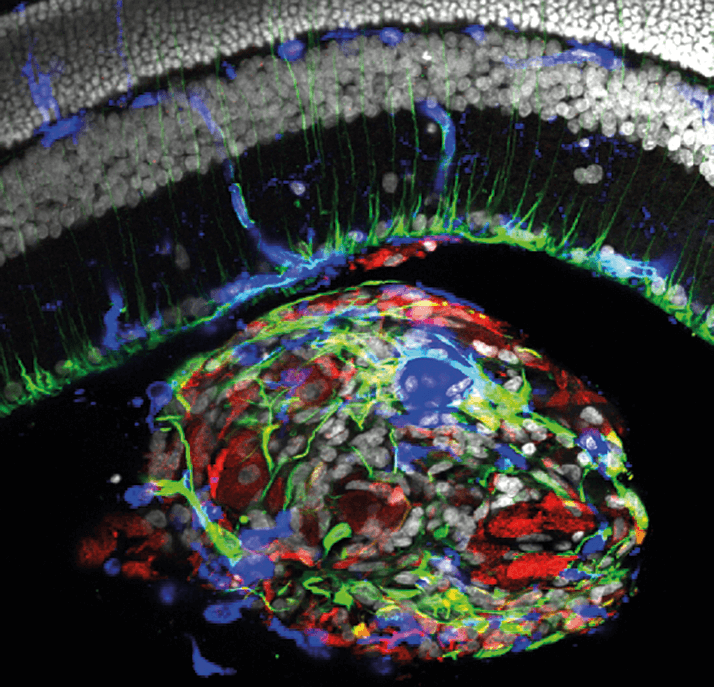
Retinitis pigmentosa is both the most frequent hereditary posterior segment disorder and a leading cause of blindness among 20- to 60-year-olds (1). Because approximately one in 5,000 people suffers from a retinal dystrophy (2), it’s a prime target for research into both preventing vision loss, and restoring previously lost vision – and research pertaining to both has recently been published.
In California, scientists from University of California campuses in Irvine and Santa Barbara have collaborated to develop a therapy that involves injecting retinal progenitor stem cells into the eye. The cells release growth factors specific to the retina (3), which Henry Klassen and his team hope will protect photoreceptors in the native retina (Figure 1). The eventual goal is a single-injection treatment that will preserve patients’ remaining vision after diagnosis. Thus far, four patients with retinitis pigmentosa have received an injection of retinal progenitor cells in an open-label Phase I/IIa trial; however, the trial will ultimately enroll 16 patients who will be followed for 12 months (4). Meanwhile, at the University of Manchester, a team led by Rob Lucas is investigating the other side of the coin – the potential for restoring vision to patients who have already lost it. Rob’s team tried expressing the human photoreceptor molecule rhodopsin in the non-photoreceptor cells of the inner retina in mice (5). The experiment allowed the mice to detect flickering light, changes in brightness, spatial patterns, and movie scenes of mice traveling around an open area – effectively turning their inner retinal cells into photoreceptors and restoring their lost vision. The cells showed the same variety of responses to stimuli seen in natural sight, and – most importantly – did so under natural viewing conditions, including moderate illumination and contrast. The success of this therapy in mice means that, although not yet attempted in humans, rhodopsin could offer hope of restoring vision lost to retinitis pigmentosa.
References
- F Parmeggiani, “Clinics, epidemiology and genetics of retinitis pigmentosa”, Curr Genomics, 12, 236–237 (2011). PMID: 22131868. DG Telander, “Retinitis pigmentosa” (2015). Available at: http://bit.ly/1iHfyGw. Acccessed September 13, 2015. S Fernandez, “A treatment in sight” (2015). Available at: http://bit.ly/1i995DR. Accessed September 13, 2015. T Vasich, “UCI-led team begins first clinical trial of stem cell-based retinitis pigmentosa treatment” (2015). Available at: http://bit.ly/1LrYjA6. Accessed September 13, 2015. J Cehajic-Kapetanovic, et al., “Restoration of vision with ectopic expression of human rod opsin”, Curr Biol, 25, 2111–2122 (2015). PMID: 26234216.
